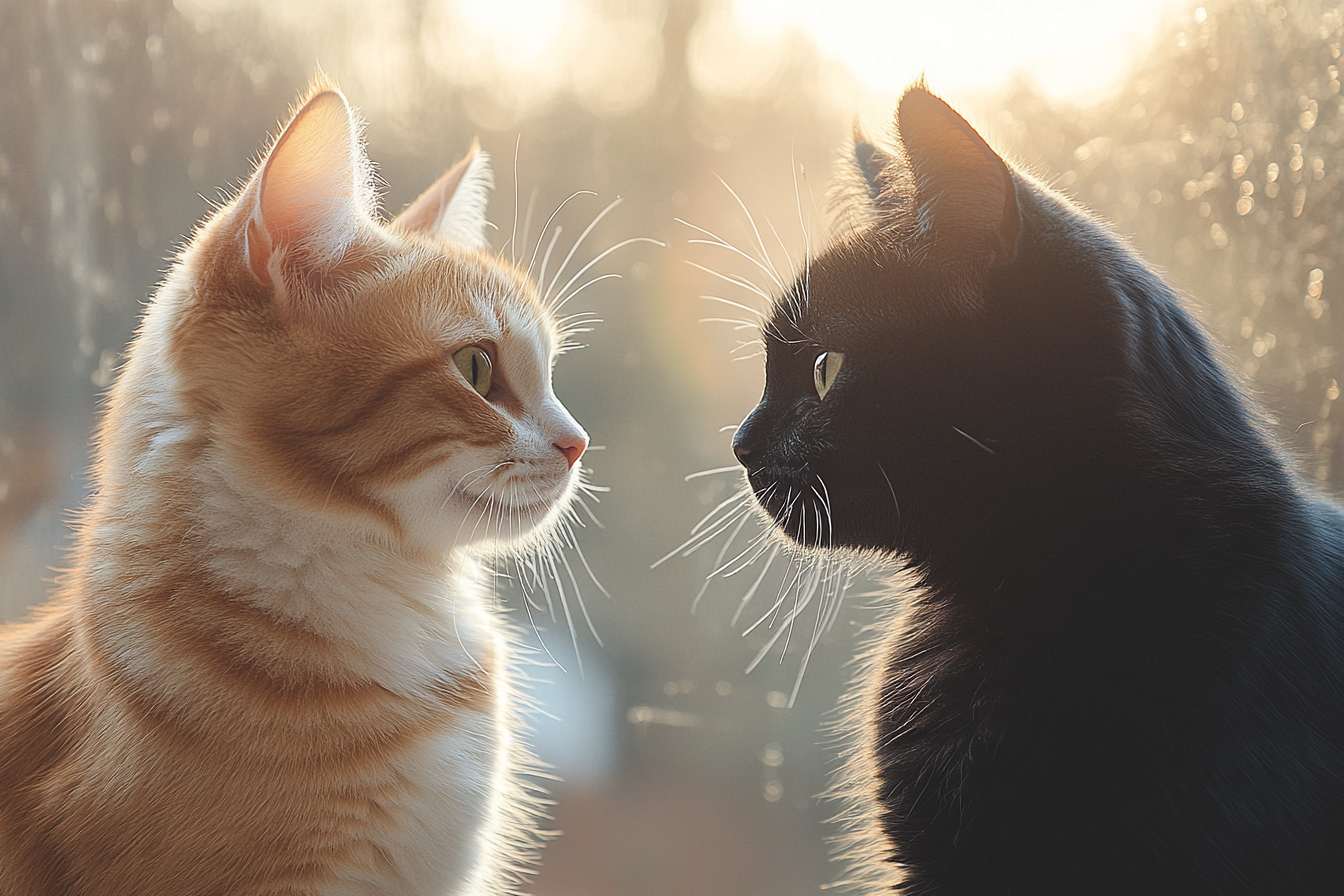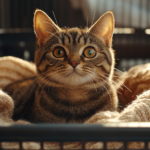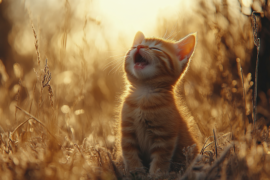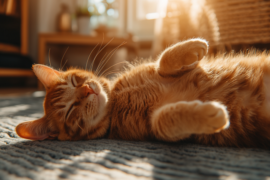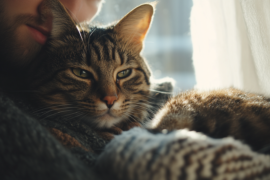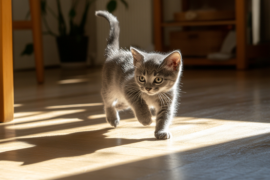Have you ever looked into your cat’s eyes and wondered what they’re trying to tell you? Those mesmerizing feline gazes actually speak volumes – if you know what to look for. Let’s decode the secret language of cat eyes together!
The Basic Elements of Eye Communication
Understanding cat eye language starts with recognizing three key elements: pupil size, eye shape, and blink rate. Like pieces of a puzzle, these components work together to express your cat’s emotional state. The fascinating part? Cats developed this sophisticated eye communication not just for interacting with humans, but primarily as a survival mechanism in the wild.
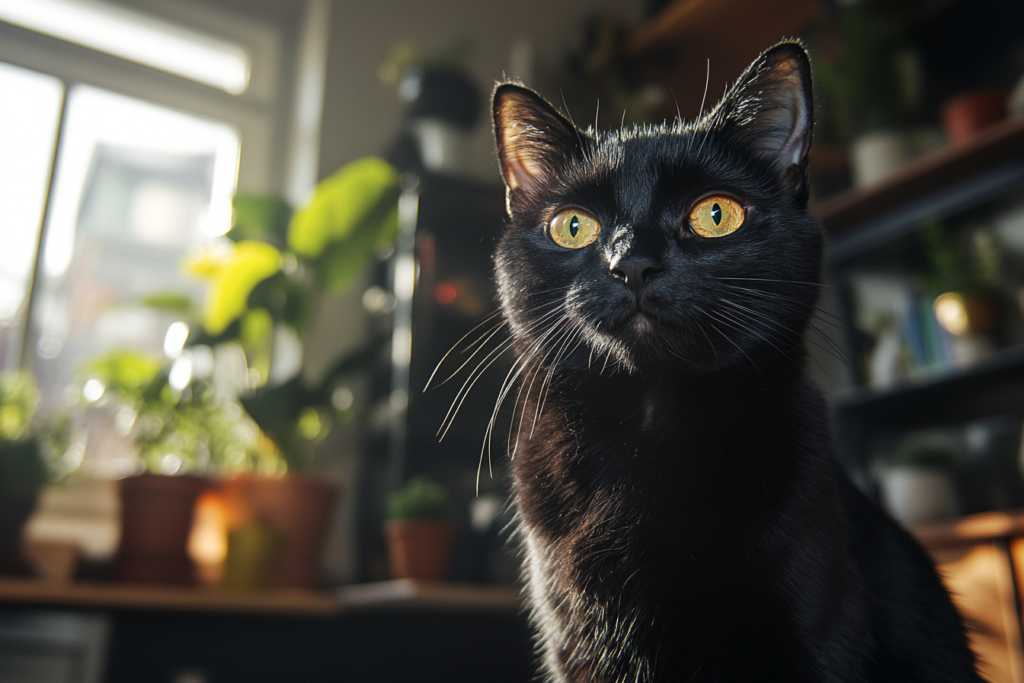
The Truth About Direct Eye Contact
Here’s something that might surprise you: while we humans see direct eye contact as friendly, cats actually consider it a challenge or threat. Think about it from an evolutionary perspective – in the wild, predators stare at their prey before attacking. That’s why unfamiliar cats often get into staring contests! When a cat gives an unblinking, hard stare with dilated pupils, they’re either feeling threatened or showing aggression.
But don’t worry – your cat’s loving gaze at dinner time is something completely different! When your cat looks at you with soft eyes and normal-sized pupils, especially while blinking slowly, they’re showing affection and trust. Context is everything.
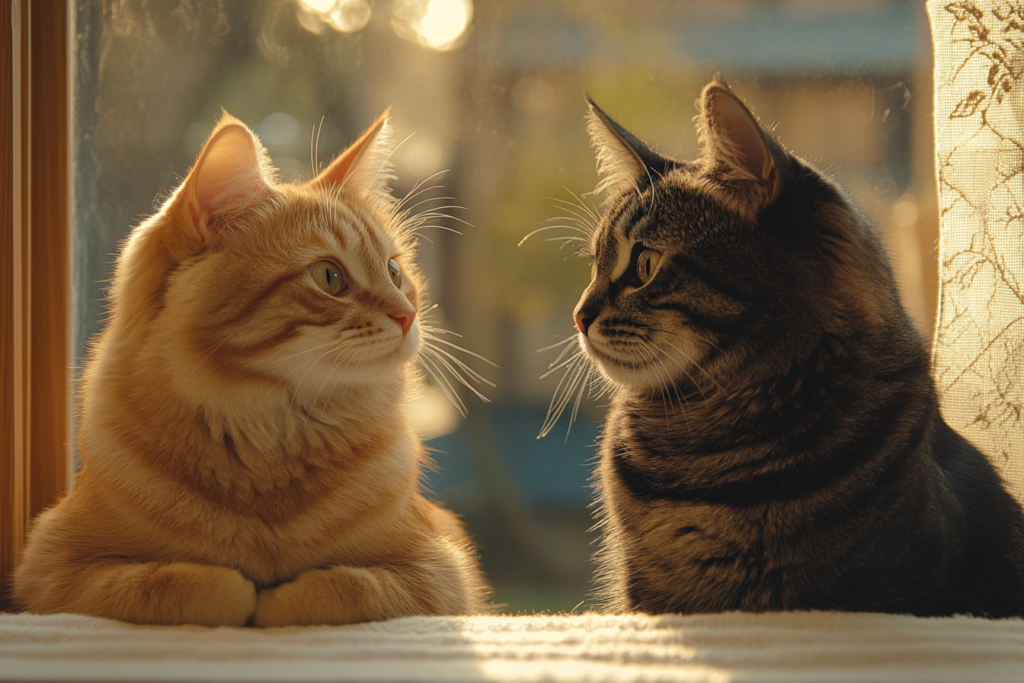
The Famous Slow Blink
Let’s talk about the slow blink – probably the most heartwarming form of cat eye communication. When a cat slowly closes and opens their eyes while looking at you, they’re essentially blowing you a kiss! This gesture shows complete trust, as the cat is willingly making themselves vulnerable by closing their eyes in your presence.
Want to return the love? Try this:
- Look at your cat from a comfortable distance
- Make soft eye contact (no staring!)
- Slowly close your eyes for a couple of seconds
- Slowly open them
- Watch as your cat might return the gesture
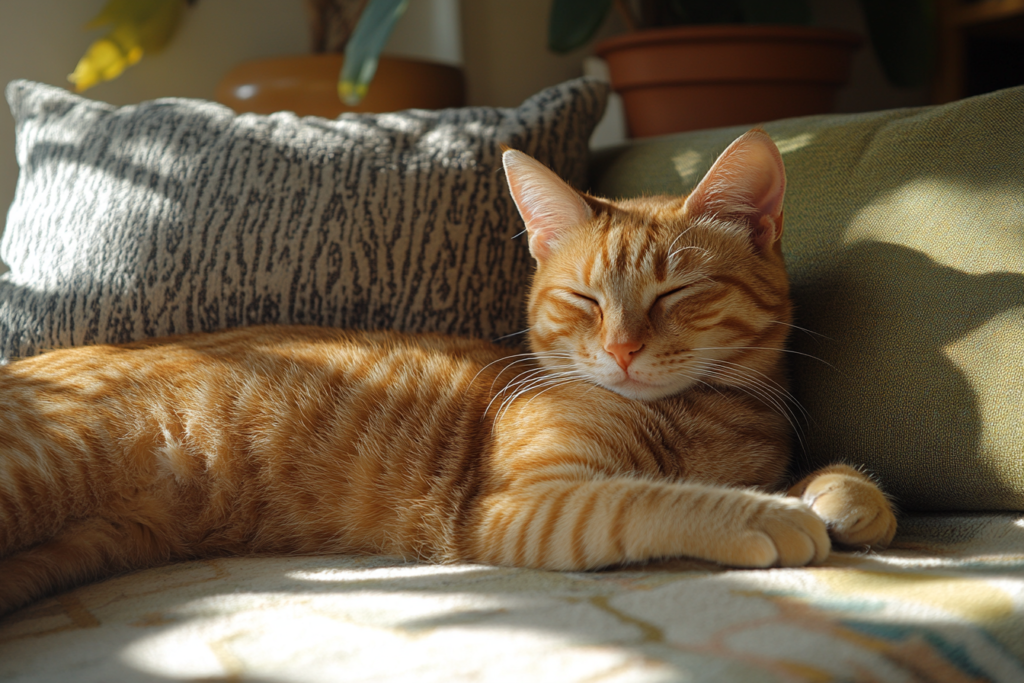
Pupil Talk: What Different Sizes Mean
Your cat’s pupils are incredibly expressive and can change size rapidly based on both emotions and environmental conditions. Here‘s your complete guide to pupil meanings:
Dilated (Large) Pupils
- In low light: Normal adaptation for better vision
- In normal light:
- Excitement during play
- Fear or stress
- Pain or illness
- High alertness before pouncing
- Strong emotional response
Constricted (Small) Pupils
- In bright light: Normal light adaptation
- In normal light:
- Contentment
- Aggression (when combined with hard stare)
- Focused attention
- Confidence
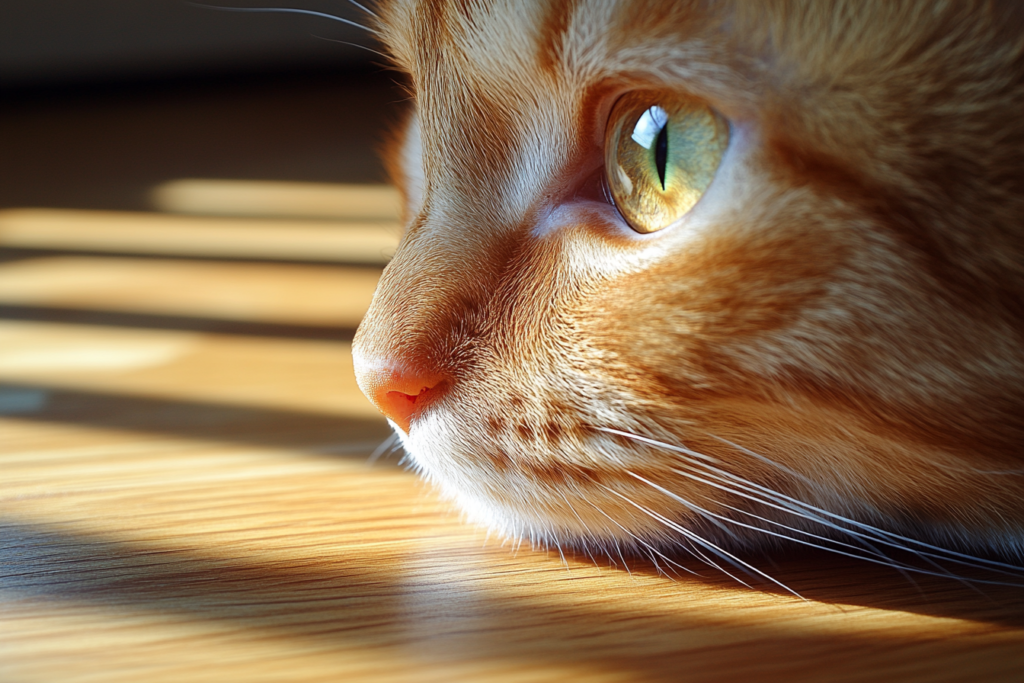
Reading Complex Emotions Through Eyes
Cat eyes can reveal subtle emotional states when you know what to look for:
Feeling Secure and Happy
- Half-closed eyes
- Normal pupil size
- Frequent slow blinks
- Soft, relaxed gaze
Feeling Anxious or Insecure
- Wide open eyes
- Dilated pupils
- Rapid blinking
- Avoiding direct eye contact
Feeling Playful
- Bright, alert eyes
- Pupils that change size quickly
- Quick eye movements
- Focused gaze on toys/movement
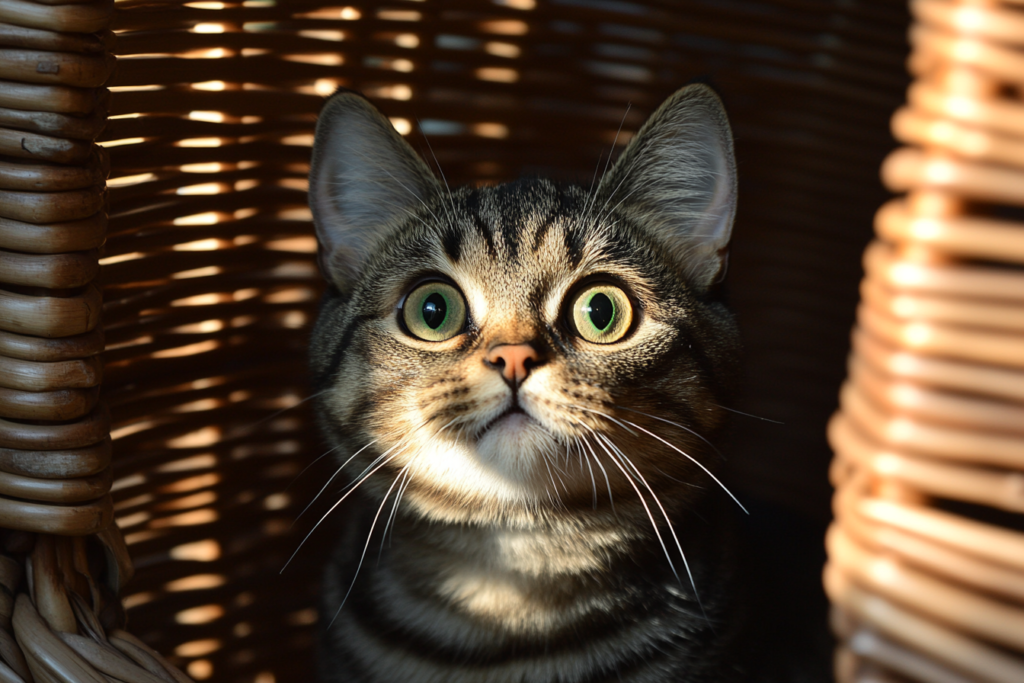
Health Signals in Your Cat’s Eyes
Your cat’s eyes can be early warning signs of health issues. Watch for:
- Squinting or keeping one/both eyes closed
- Visible third eyelid (the pink membrane in corner of eye)
- Uneven pupils
- Cloudiness or change in eye color
- Excessive tearing or discharge
- Rubbing eyes frequently
Any of these signs deserve prompt veterinary attention, as eye problems can quickly become serious.
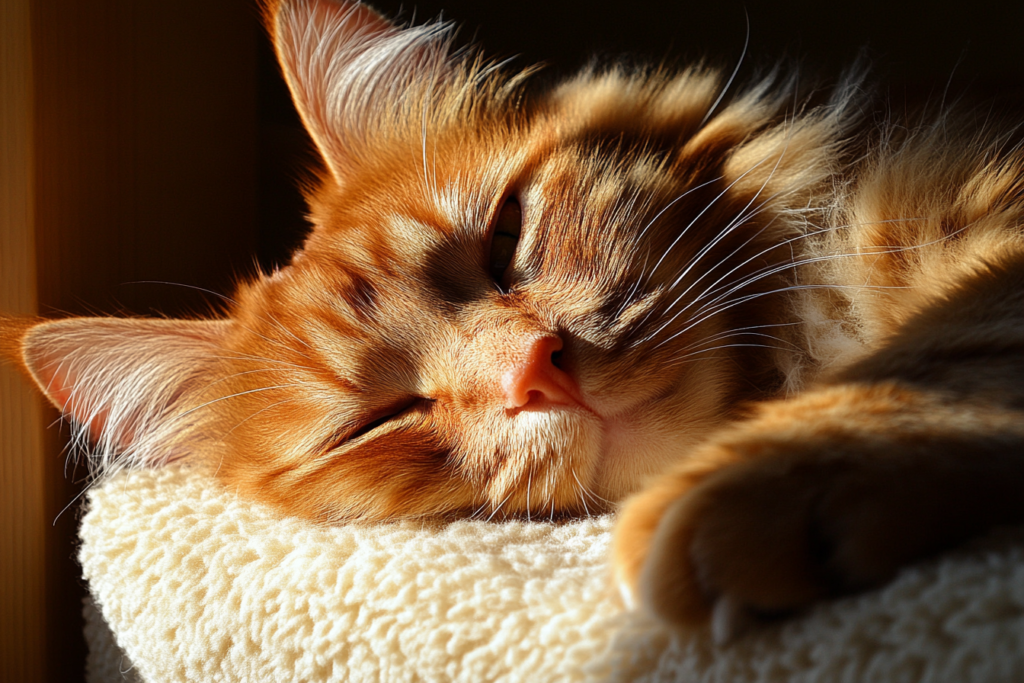
The Role of Eyes in Predatory Behavior
Ever noticed your cat’s eyes when they’re watching birds through the window? Their predatory nature shows through:
- Intense focus with slightly narrowed eyes
- Pupils adjusting rapidly to track movement
- Quick, jerky eye movements following prey
- Often accompanied by chattering or chirping
This behavior is completely normal – it’s their hunting instinct in action!
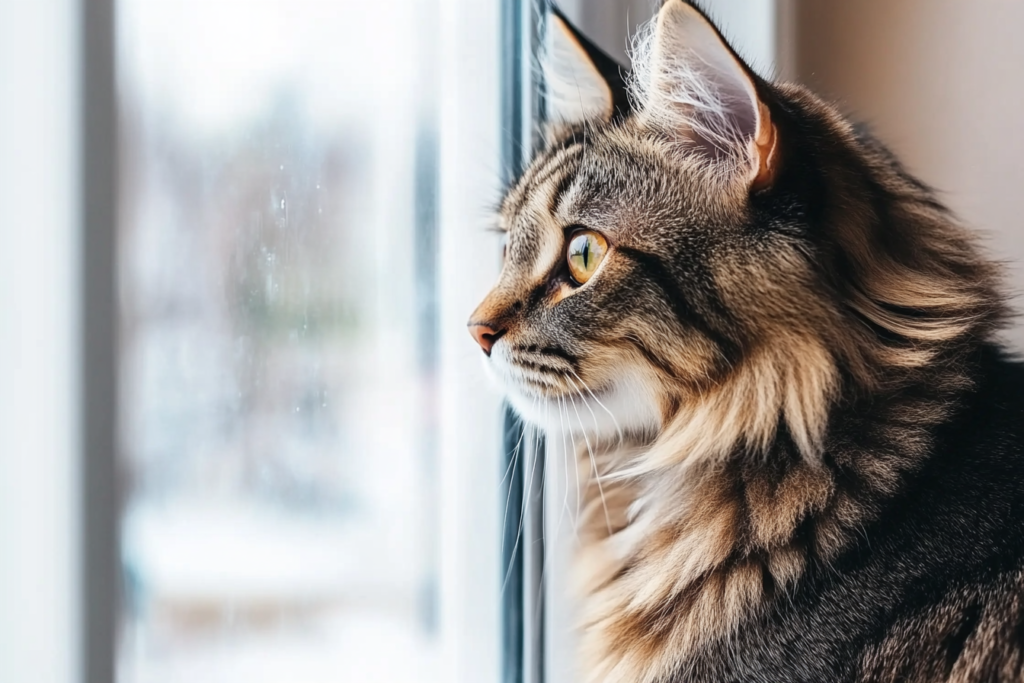
Multi-Cat Household Eye Signals
If you have multiple cats, watching their eye interactions can help you understand their relationships:
- Friendly cats exchange slow blinks
- Subordinate cats avoid direct eye contact
- Dominant cats may stare until others look away
- Tense staring between cats often precedes conflict
Understanding these dynamics can help you prevent conflicts and create a harmonious multi-cat home.
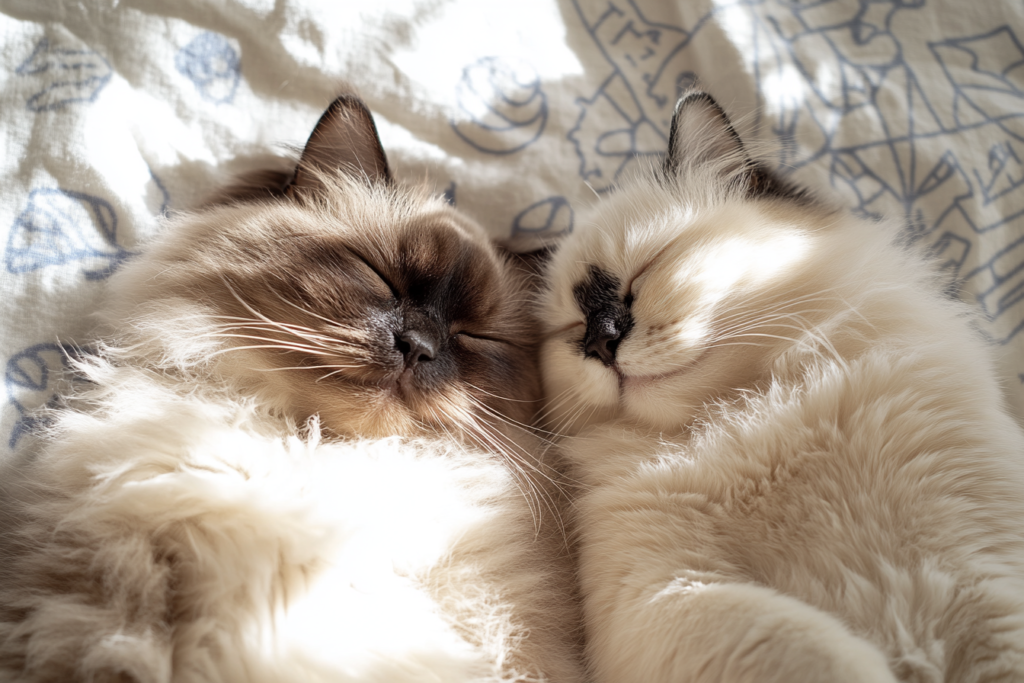
Building Trust Through Eye Communication
Remember these key points for better eye communication with your cat:
- Never force eye contact
- Respect their need to look away
- Use slow blinks to show affection
- Watch for subtle changes in pupil size
- Consider the whole picture of their body language
The more you understand your cat’s eye signals, the stronger your bond will become. And don’t forget – every cat is unique, so take time to learn your particular pet’s eye language patterns. With practice, you’ll be amazed at how much your cat tells you through those beautiful eyes!
Want to learn more about cat body language? Check out my other articles about tail positions, ear movements, and general feline communication!

